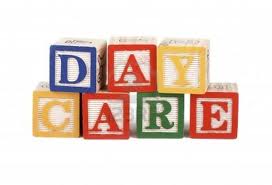By Sandra L. Gottlieb, Esq. Senior Partner at SwedelsonGottlieb, Community Association Attorneys

Did you know that California community associations are required to allow an owner to operate a “family day care home” within their unit or lot at an association and that the day care can have up to 14 kids in it!? Yup, it is true. This blog post is intended to address family day care homes and what your association can do to deal with them to reduce, if not eliminate, its liability and protect the community.
What if an association has a provision in its CC&Rs prohibiting commercial and business uses?
The California Health and Safety Code, at Sections 1597.30 to 1597.621, deals with family day care homes and states that “it is the public policy of [California] to provide children in a family day care home the same environment as provided in a traditional home setting.” In other words, the legislature is saying that children do best when raised in a home, their home or another’s home. For these reasons, public policy exempts an owner who is operating such a home from restrictions in an association’s governing documents that prohibit commercial or business uses.
Can an association require a fee to help cover the costs of processing requests to operate family day care homes through your association’s legal counsel or other expenses that an association may incur related to the family day care home?
No! Because the authority to operate a family day care home is based on public policy, the public (or the association), not the owner, must bear the cost.
What restrictions can an association impose?
The California Health and Safety Code specifies that the family day care home can be small (up to 8 children) or large (up to 14 children). So, your association can limit family day care homes to 14 children.
Also, pursuant to California Health and Safety Code Section 1597.531, you can require that the provider/owner maintain in force either liability insurance covering injury to clients and guests in the amount of at least $100,000 per occurrence and $300,000 in the total annual aggregate, or a bond in the aggregate amount of $300,000. However, in lieu of liability insurance, the day care owner may instead maintain a file of affidavits signed by each parent with a child enrolled in the home, which meets the requirements of California Health and Safety Code Section 1597.531. The affidavit must state that the parent has been informed that the family day care home does not carry liability insurance or a bond according to standards established by the state of California. If the provider does not own the premises used as the family day care home (in other words, a tenant is operating the family day care home), the affidavit shall also state that the parent has been informed that the liability insurance, if any, of the owner of the property or the association, as appropriate, may not provide coverage for losses arising out of, or in connection with, the operation of the family day care home, except to the extent that the losses are caused by, or result from, an action or omission by the owner of the property or the association, for which the owner of the property or the association would otherwise be liable under the law.
If the provider/owner maintains liability insurance or a bond, an association can require that the day care owner name the association as an additional insured on the liability insurance policy or the bond so long as (1) the association makes a written request for same, (2) the addition of the association does not result in the cancellation or non-renewal of the insurance policy or bond carried by the home, and (3) any additional premium assessed for this coverage is paid by the owner of the property or the association.
Finally, you should also check your local county regulations to see whether there are additional requirements. For example, the County of Los Angeles has a Child Care Provider Guide that sets forth additional requirements for family day care homes, including but not limited to: a director’s review, fire safety clearance, criminal record clearance, and tuberculosis skin test and results. Many of these requirements are for the governmental agency to handle, and associations can confirm with the appropriate agency as to whether the requirements have been met; however, the association cannot independently demand a criminal record clearance or any of the other requirements imposed on the family day care home by the governmental agency.
But what if the kids cause damage to the common area?
The owner is still subject to the governing documents and the Davis-Stirling Common Interest Development Act and responsible for the damage. So, in the event damage is caused to the common area, the association can levy a reimbursement assessment for the cost of repair against the owner of the property.
The bottom line is that although community associations are required to allow owners to operate a family day care home within their separate interest, the association can still require that they comply with the law in order to do so.
Should you have any specific questions regarding this issue, please feel free to email Sandra Gottlieb at slg@sghoalaw.com.
 HOA Law Blog
HOA Law Blog


